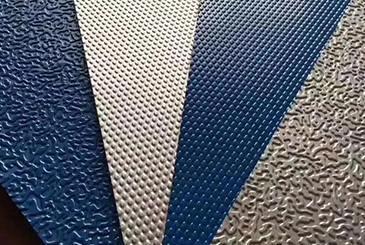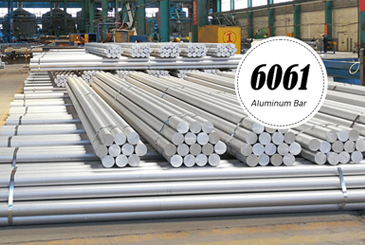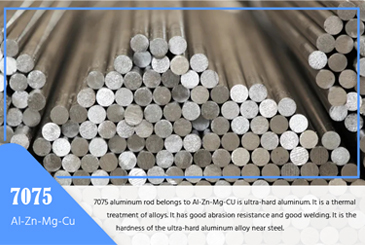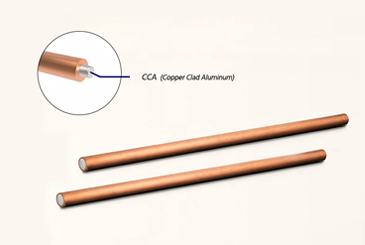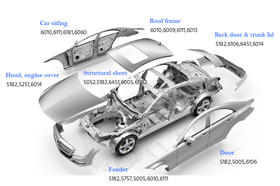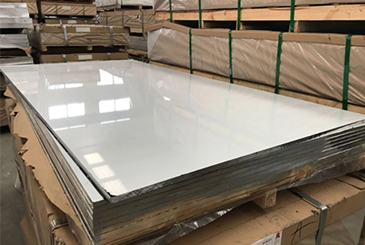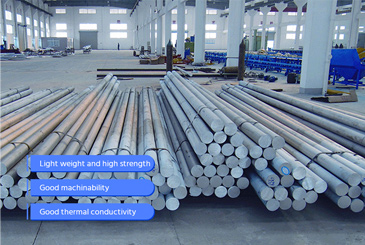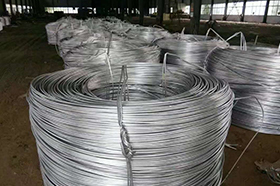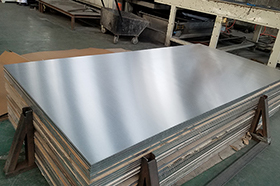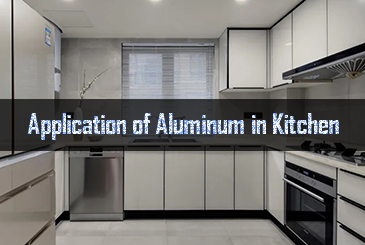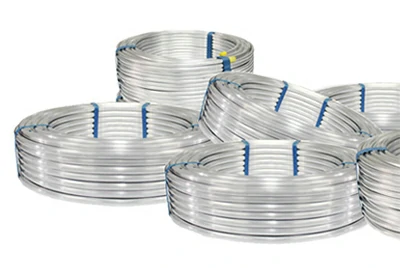1100 Aluminum Tube is an industrial pure aluminum tube with an aluminum content of ≥ 99.0 %, offering exceptional corrosion resistance, thermal conductivity, weldability, and formability. It's widely used in heat exchange systems, food-grade piping, chemical pipelines, architectural decoration, and electrical structures.
Instant QuoteCompared to 3003 aluminum tube, 1100 tube has lower strength but offers superior ductility and lighter weight.non-heat-treated hardness, and eco-friendly non-toxic characteristics—making it highly cost-effective for applications requiring good heat transfer, corrosion protection, and forming.
- 1100 Extruded Aluminum Tube
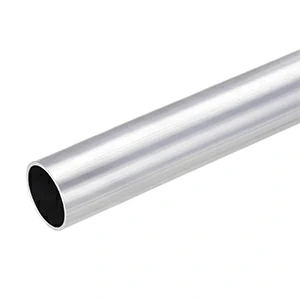
OD: 0.314" - 12" (3mm - 300mm)
Wall: 0.032" - 0.5" (0.8mm - 12.7mm)
Standard: ASTM B241, ASTM B483, WW-T-700/1, EN 754-5
- 1100 Cold Drawn Aluminum Tube

OD: 0.2" - 8.66" (5mm - 220mm)
Wall: 0.02" - 0.39" (0.5mm - 10mm)
Standard: ASTM B210, ASTM B483
- 1100 Seamless Aluminum Tube

OD: 3.54" - 11.81" (90mm - 300mm)
Wall: 0.2" - 0.79" (5mm - 20mm)
Standard: ASTM B241, ASTM B210
- 1100 Aluminum Coiled Tube

OD: 0.25" - 4" (6.35mm - 101.6mm)
Wall: 0.02" - 0.12" (0.5mm - 3mm)
Standard: ASTM B491, WW-T-700/1
Hot Selling Sizes of 1100 Aluminum Tube
Small 1100 Aluminum Tube
Outer Diameter: 1.59–12.7 mm
Wall Thickness: 0.254–0.889 mm
Typical Applications: food-grade piping,instrument conduits,pneumatic systems,electronic cooling components,lighting decoration structures.
| Product | Outer Diameter (OD) | Wall Thickness (Wall) | Length | Applicable Standards |
| 1100 aluminum tube | 1/32" (0.79mm) | 0.010" (0.254mm) | 144"/240" Cut-To-Length | ASTM B483 |
| 1100 aluminum tube | 3/64" (1.19mm) | 0.008" (0.203mm) | 144"/240" Cut-To-Length | ASTM B241 |
| 1100 aluminum tube | 1/16" (1.59mm) | 0.012" (0.305mm) | 144"/240" Cut-To-Length | ASTM B483 |
| 1100 aluminum tube | 1/8" (3.18mm) | 0.014" (0.356mm) | 144"/240" Cut-To-Length | WW-T-700/1, ASTM B241 |
| 1100 aluminum tube | 3/16" (4.76mm) | 0.014" (0.356mm) | 144"/240" Cut-To-Length | WW-T-700/1 |
| 1100 aluminum tube | 1/4" (6.35mm) | 0.014" (0.356mm) | 144"/240" Cut-To-Length | WW-T-700/1, ASTM B241 |
| 1100 aluminum tube | 5/16" (7.94mm) | 0.014" (0.356mm) | 144"/240" Cut-To-Length | WW-T-700/1 |
Medium-Small 1100 Aluminum Tube
Outer Diameter: 12.7–19.05 mm
Wall Thickness: 0.889–2.41 mm
Typical Applications: ventilation systems,tank liners,structural supports,heat-exchange modules.
| Product | Outer Diameter (OD) | Wall Thickness (Wall) | Length | Applicable Standards |
| 1100 aluminum tube | 3/8" (9.53mm) | 0.025" (0.635mm) | 144"/240" Cut-To-Length | ASTM B241, EN 754-5 |
| 1100 aluminum tube | 1/2" (12.7mm) | 0.035" (0.889mm) | 144"/240" Cut-To-Length | WW-T-700/1, ASTM B241 |
| 1100 aluminum tube | 1/2" (12.7mm) | 0.065" (1.65mm) | 144"/240" Cut-To-Length | ASTM B241, EN 754-5 |
| 1100 aluminum tube | 5/8" (15.88mm) | 0.049" (1.24mm) | 144"/240" Cut-To-Length | ASTM B483, EN 754-5 |
| 1100 aluminum tube | 5/8" (15.88mm) | 0.083" (2.11mm) | 144"/240" Cut-To-Length | WW-T-700/1 |
| 1100 aluminum tube | 3/4" (19.05mm) | 0.095" (2.41mm) | 144"/240" Cut-To-Length | ASTM B241 |
Medium 1100 Aluminum Tube
Outer Diameter: ≥ 25.4 mm
Wall Thickness: ≥ 3.18 mm
Typical Applications: heavy machinery,high-pressure chemical systems,municipal pipelines.
| Product | Outer Diameter (OD) | Wall Thickness (Wall) | Length | Applicable Standards |
| 1100 aluminum tube | 1" (25.4mm) | 0.065" (1.65mm) | 144"/240" Cut-To-Length | ASTM B241, EN 754-5 |
| 1100 aluminum tube | 1" (25.4mm) | 0.125" (3.18mm) | 144"/240" Cut-To-Length | ASTM B241, EN 754-5 |
| 1100 aluminum tube | 1" (25.4mm) | 0.188" (4.78mm) | 144"/240" Cut-To-Length | ASTM B241, EN 754-5 |
| 1100 aluminum tube | 1.5" (38.1mm) | 0.188" (4.78mm) | 144"/240" Cut-To-Length | ASTM B483 |
| 1100 aluminum tube | 2" (50.8mm) | 0.125" (3.18mm) | 144"/240" Cut-To-Length | WW-T-700/1 |
| 1100 aluminum tube | 2" (50.8mm) | 0.250" (6.35mm) | 144"/240" Cut-To-Length | WW-T-700/1 |
If you need more 1100 aluminum tube Specs or customized solutions, please contact us for technical support.
Instant Quote1100 aluminum tube product type
1100 Drawn Seamless Tube
Manufactured via cold drawing with high dimensional accuracy and excellent surface finish, suitable for applications demanding precision and cleanliness. Commonly used in heat exchangers chemical equipment precision instrument...
Spec: ASTM B210,ASTM B483,WW-T-700/1
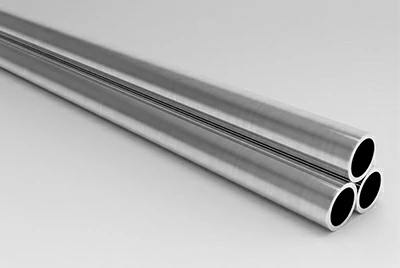
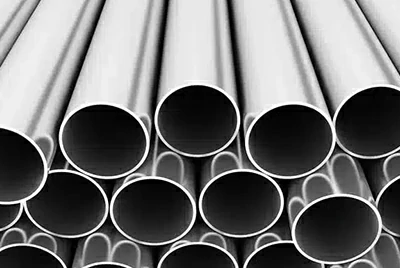
1100 Seamless Extruded Tube
Formed by hot extrusion for medium to large diameter, thick-walled tubes with good formability and mechanical stability. Widely applied in industrial ventilation systems building structural piping electrical insulation sleeveslow-pressure transmission systems
Spec: ASTM B241,EN 754-5
1100 Welded Aluminum Tube
Roll-formed then arc-welded or high-frequency welded, offering a lightweight structure and good machinability, suitable for low-pressure applications. Common uses include furniture frames ventilation exhaust ducts display racks lighting frames
Spec: ASTM B313,ASTM B547,ASTM B491
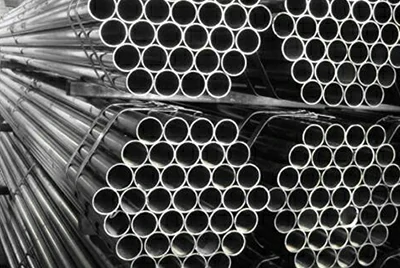
Cold-drawn and coiled for flexible routing in space-limited or long continuous-run applications. Typical uses include air conditioner condensers refrigeration system coils medical equipment wiring
Spec: ASTM B483,EN 754-3
1100 Formed & Arc-Welded Tube
Produced via roll forming plus arc welding, ideal for custom cross-sections and non-standard structural tubing. Frequently used in automotive exhaust systems industrial equipment structural frames custom support components
Spec: ASTM B547,EN 10219-2
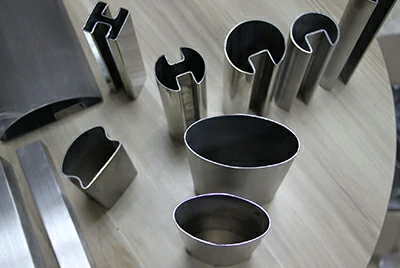
Chemical composition of 1100 aluminum tube
| Element | Value(%) |
| Si + Fe | ≤ 0.95 |
| Cu | ≤ 0.05 |
| Mn | ≤ 0.05 |
| Zn | ≤ 0.10 |
| Ti | ≤ 0.05 |
| Other (each) | ≤ 0.05 |
| Other (total) | ≤ 0.15 |
| Al (aluminum) | ≥ 99.00 |
Physical properties of 1100 aluminum tube
| Density | 2.71 g/cm³ (0.098 lb/in³) |
| Hardness (Brinell) | HB 23 |
| Poisson's ratio | 0.33 |
| Thermal conductivity | 218 W/m·K |
| Electrical conductivity | 59% IACS |
| Specific heat capacity | 0.21 cal/g·°C (0.22 Btu/lb·°F) |
| Melting point range | 643–657 °C (1190–1215 °F) |
Mechanical properties of 1100 aluminum tube
| Temper | Tensile strength(Ksi) | Tensile strength(Mpa) | Yield strength(Ksi) | Yield strength (Mpa) |
| O | 11.0~15.5 | 75.8~106.9 | 3.5 | 24.1 |
| H12 | 14 | 96.5 | 11 | 75.8 |
| H14 | 16 | 110.3 | 14 | 96.5 |
| H16 | 19 | 131 | 17 | 117.2 |
| H18 | 22 | 151.7 | 20 | 137.9 |
| H113 | 11 | 75.8 | 3.5 | 24.1 |
Characteristics of 1100 aluminum tube
- 1100 Aluminum Tube is made from ≥ 99% pure aluminum, offering excellent formability, weldability, and corrosion resistance.
- It provides long-term oxidation resistance in non-marine environments, suitable for food, chemical, and cooling systems.
- It has a thermal conductivity of 218 W/m·K and electrical conductivity of 59% IACS, making it a lightweight alternative to copper tubes.
- In O temper, it exhibits exceptional ductility, ideal for cold bending, coiling, stamping, and other complex forming processes.
- It is compatible with TIG/MIG welding, delivering stable joint strength and good airtightness.
Industry Solutions for 1100 Aluminum Tube
1100 aluminum tube is widely used across industries requiring high formability, material purity, and corrosion resistance. Its excellent ductility and thermal conductivity make it a cost-effective choice for low-to-medium strength systems.
Heat Exchangers
With high thermal conductivity and strong corrosion resistance, 1100 aluminum tubing is an ideal alternative to copper, extensively used in radiators, condensers, and liquid cooling modules.
Temper: O / H112
Size: φ6–25mm
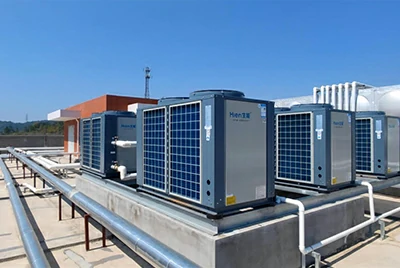
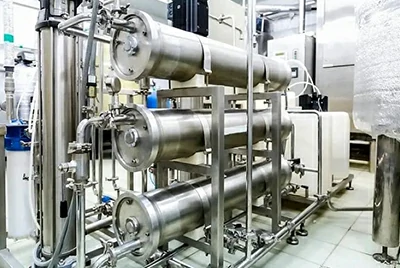
Food & Pharma
Clean, safe, and oxidation-resistant, 1100 aluminum tube meets hygienic standards for food-grade applications, commonly used in pipelines, cooling jackets, and reaction circuits.
Temper: O
Size: φ10–50mm
Chemical Systems
Offers excellent corrosion resistance and formability, suitable for low-pressure corrosive environments involving connector pipes and auxiliary heat exchangers.
Temper: O / H14
Size: φ8–60mm
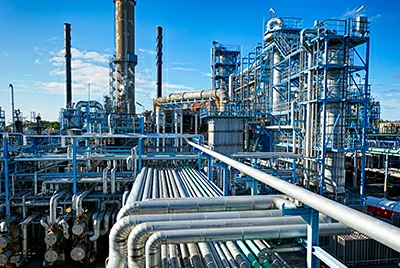
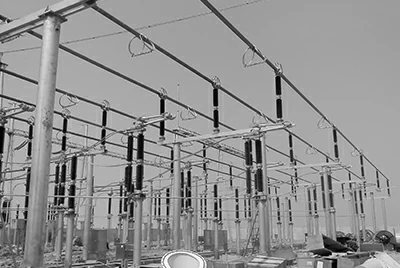
Electrical & Conduction
A cost-efficient copper substitute for busbars, grounding conduits, and thermal dissipation components in budget-sensitive electrical projects.
Temper: H14
Size: φ12–80mm
Architectural & Lighting
Highly formable with a durable, attractive anodized finish, suitable for lamp housings, railings, and decorative frames.
Temper: O / H14
Products: Custom-profile aluminum tube, color-coated aluminum tube
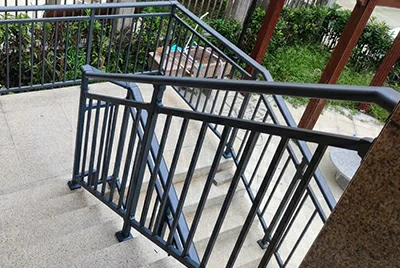

Signs & General Structures
Easy to stamp and weld, used in signpost brackets, structural connectors, and support rails.
Temper: O
Products: Thin-wall aluminum tube, perforated aluminum tube
If you're selecting the right 1100 aluminum tube for your heat exchange, food processing, or architectural application, we offer fast model recommendations and sample support to help optimize your material setup efficiently.
Instant Quote1100 aluminum tube vs. 3003 aluminum tube
1100 and 3003 aluminum tubes are both widely used for low-strength, corrosion-resistant applications and often serve as interchangeable options in industrial settings. However, they differ in performance characteristics, application suitability, and cost-efficiency.
| Properties | 1100 Aluminum tube | 3003 Aluminum Tube |
| Alloy type | Pure aluminum (Al ≥99.0%) | Al-Mn alloy (Mn about 1.2%) |
| Tensile strength (MPa) | 75–150 (O to H18) | 110–200 |
| Yield strength (MPa) | 25–140 | 40–180 |
| Ductility (%) | Up to 35% (O state) | 30% (O state) to 10% (H14) |
| Corrosion resistance | Excellent, suitable for food and chemical industries | Also excellent, suitable for outdoor environment |
| Thermal conductivity (W/m·K) | 218 | 193 |
| Electrical conductivity (%IACS) | 59% | 50% |
| Processing performance | Excellent (suitable for deep bending, welding) | Good (slightly higher strength, processing requires greater pressure) |
| Typical cost | $ (lowest cost) | $$ (slightly higher) |
| Recommended typical state | O (annealed), H14 (semi-hard) | H14, H16, O |
If your project prioritizes lightweight design, thermal/electrical conductivity, and corrosion resistance—such as in radiators, lighting frames, or food-grade pipelines—and does not require high strength, 1100 aluminum tube is the better choice.
For applications that demand slightly higher structural strength while maintaining similar formability—like medium-load supports, air ducts, or decorative surface tubing—3003 aluminum tube is the preferred option.
Related products of 1100 aluminum tube

3003 Aluminum Tube

5052 Aluminum Tube

5083 Aluminum Tube

5086 Aluminum Tube

6061 Aluminum Tube

6063 Aluminum Tube

6082 Aluminum Tube

7005 Aluminum Tube

7075 Aluminum Tube
FAQs
 Why Is 1100 Aluminum Tube Commonly Used Despite Its Low Strength?
Why Is 1100 Aluminum Tube Commonly Used Despite Its Low Strength?Although its tensile strength is relatively low (75–150 MPa), 1100 aluminum tube offers excellent thermal conductivity, electrical conductivity, corrosion resistance, and cost-efficiency. It's ideal for light-duty, chemical processing, food-grade piping, and low-pressure ventilation applications. For higher strength requirements, consider 3003 aluminum tube or reinforcing with 6061 aluminum in critical sections.
 How to Improve Machining Efficiency When 1100 Aluminum Tube Tends to Clog Tools?
How to Improve Machining Efficiency When 1100 Aluminum Tube Tends to Clog Tools?Use sharp carbide tools with a large rake angle, increase spindle speed, and apply low feed rates. Combine with appropriate coolants or emulsions, and adopt multi-stage precision machining to enhance both cutting efficiency and surface finish.
 What's the Maximum Temperature Resistance of 1100 Aluminum Tube?
What's the Maximum Temperature Resistance of 1100 Aluminum Tube?Recommended continuous use is ≤150°C, with short-term tolerance up to 200°C. At high temperatures, it may soften, so consider adding insulation layers or optimizing heat dissipation. For higher thermal resistance, use 6061 or 2024 aluminum tube.
 Can 1100 Aluminum Tube Be Anodized? Does It Increase Surface Hardness?
Can 1100 Aluminum Tube Be Anodized? Does It Increase Surface Hardness?Yes, anodizing can improve corrosion resistance, but it offers limited hardness enhancement (200–400 HV). For wear-resistant applications, use 6061-T6 aluminum tube with hard anodizing treatment.
 Can 1100 Aluminum Tube Replace Copper Conductors? What's the Performance?
Can 1100 Aluminum Tube Replace Copper Conductors? What's the Performance?It provides significant advantages in weight and cost, with electrical conductivity at 59% IACS. Suitable for low-voltage electrical systems and solar busbars, but ensure proper anti-corrosion treatment at aluminum-copper junctions.
 How to Verify 1100 Aluminum Tube Compliance With ASTM Standards?
How to Verify 1100 Aluminum Tube Compliance With ASTM Standards?Check chemical composition via spectrometry (Al ≥99.0%), tensile testing, dimensional measurements, and eddy current testing. Request certifications for ASTM B210, B483, or B241, along with third-party quality reports (e.g., SGS).
 How to Extend the Service Life of 1100 Aluminum Tube in Humid or Salt Spray Environments?
How to Extend the Service Life of 1100 Aluminum Tube in Humid or Salt Spray Environments?Use anodizing or epoxy coating, avoid direct contact with steel parts, add insulating gaskets, and clean surface residues regularly. These measures can improve salt-spray resistance by 3–5 times.
 What Are the Key Points to Note When Welding 1100 Aluminum Tube?
What Are the Key Points to Note When Welding 1100 Aluminum Tube?Use TIG or MIG welding, clean oil and oxide layers beforehand, and select 4043 or 1100 filler wire. Control welding current, and perform annealing or grinding/polishing after welding to enhance structural integrity and appearance.
Chalco can provide you the most comprehensive inventory of aluminum products and can also supply you customized products. Precise quotation will be provided within 24 hours.
Get a quote


